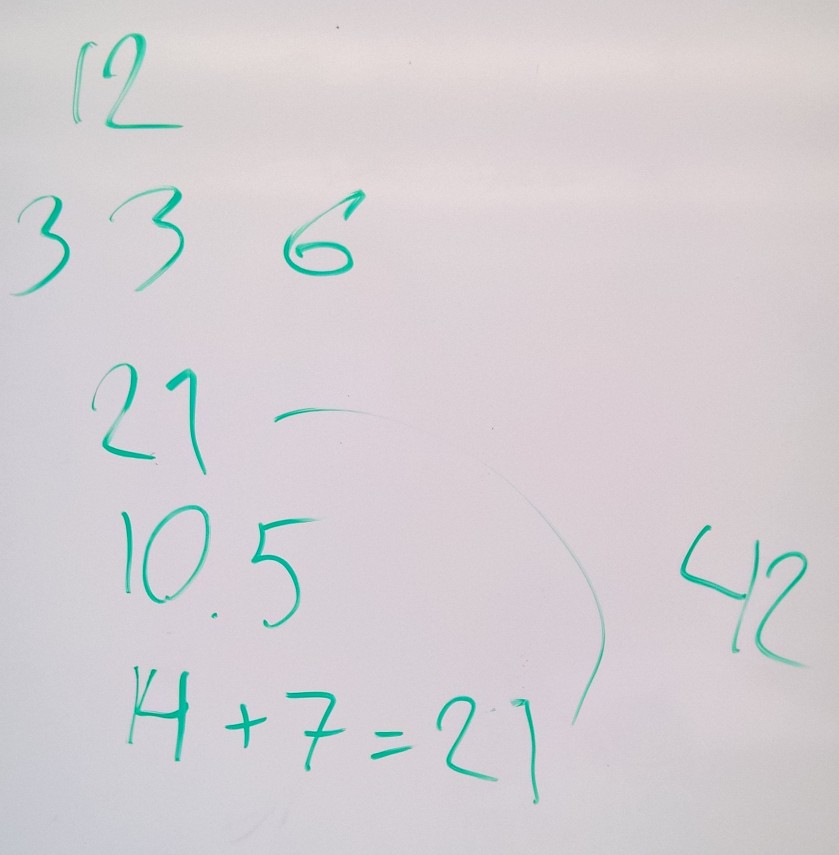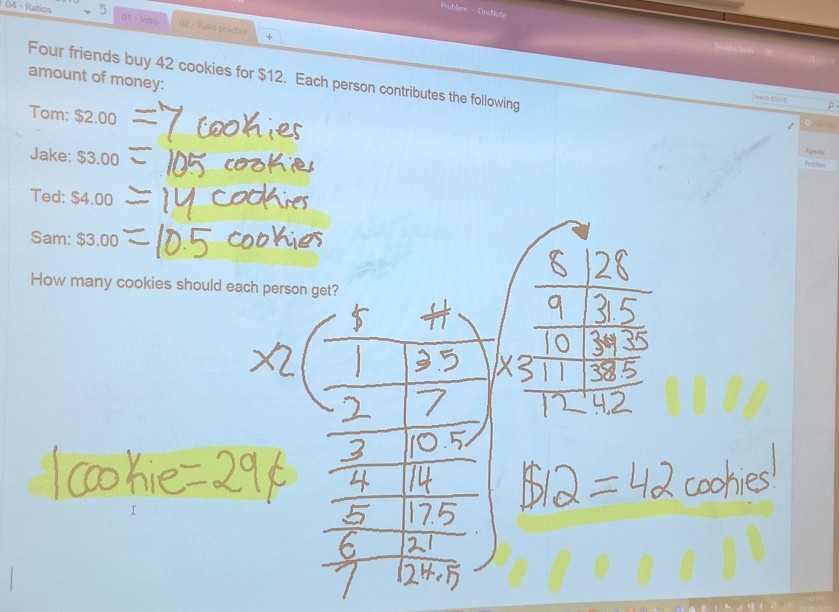
Math 8 – Students had a quiz on ratios today and they did pretty good. By far the biggest problem students have is determining what is being compared in a question. In the above question, students that struggled had a hard time figuring out what the ratio 2:3 referred to. Once this is figured out, the rest seems to go ok. I think we ended summarizing that ratio problems involve three things: determining what is being compared, working out equivalent ratios, and then determining which is bigger.
Tag: ratios
Day 59 – Cookie Sharing

Math 8 – Today’s class was working on sharing a cookie problem. It turned out to be a fantastic class, perhaps the best we’ve had this year. The problem had a low entry with lots of ways to solve it. We were able to walk around the room and see the different solutions.
The above solution is one of the most intuitive. Students realize that 1/2 the people get 1/2 the cookies (21) and since they each share this equally, they each get 10.5. This continues for the next two people.
Below is the most common solution. Students would turn this into a rate question as students naturally understand rates with little to no instruction. They find that 3.5 cookies cost $1 and then calculate how many cookies each person can have.

The rate thing is pretty interesting. Why are students so comfortable with rates? I think it’s because rates are usually very concrete. They explain the relationship between tangible things. Cookies per unit dollar. Kilometers per unit hour. Miles per unit gallon.
Next we had the fraction solution. This one is really neat because in our discussion the students realize that they are once again dealing with percents. 7/12 is 7 parts of the whole.

Finally I would end our tour with the primary goal for the lesson: equivalent ratios. This wasn’t the most common solution, but every class did have it.

Once you get to the equivalent ratio solution, you can see that it is perhaps the cleanest to exhibit and explain. I didn’t see this at the time, and I may come back to it and highlight this property.
The class was full of Flow, engaged students and learning. So awesome.
Now here is my dirty secret about the day. Many of my students were on field trips so the class size was in the range of 18 kids. While I can totally manage a class of 30, wow does the party change when the numbers drop. Behaviour problems were almost non-existent, and the level of dialogue was amazing.
If someone tells you that class size doesn’t matter, maybe they’re right… Unless they’re referring to a class where students are engaged in collaborative work that needs to be discussed and shared, in which case they will be dead wrong.